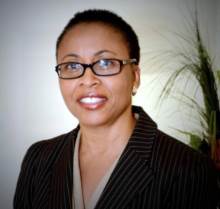“While our museums face many challenges, there are as many opportunities. Collectively we need to determine what steps we’re prepared to take and how aggressive we’re prepared to be to ensure the current and future relevancy and sustainability of our museums.”
 That’s how Grace C. Stanislaus, former Executive Director of the Museum of the African Diaspora and former President and CEO of the Romare Bearden Foundation, sums up the future of African American museums and cultural institutions.
That’s how Grace C. Stanislaus, former Executive Director of the Museum of the African Diaspora and former President and CEO of the Romare Bearden Foundation, sums up the future of African American museums and cultural institutions.
Knowing that foundations, corporations and philanthropists often want to see support from those directly impacted before making an investment, we asked Stanislaus if she finds that African American communities support local and national museums.
“In general, yes. Members of the African American and the African Diaspora communities have supported and continue to support our museums. The many regional and national museums and cultural centers that have been established over the past decades attest to it. And the impressive support that continues to move the long held dream of a National Museum of African American History and Culture to fruition affirms it. But, it’s a qualified yes. It requires that we broaden the definition of support beyond merely financial and that we include in our considerations the many socio-political and economic factors that impact charitable giving among African Americans.
“Statistically African Americans make more charitable donations of their income per year than whites despite the fact that over the past several decades the wealth gap between blacks and whites has become a nearly unbridgeable chasm. This is the case even between middle income white households and high income African Americans - the result of many factors, but primarily of ongoing discrimination and unfair practices.”
“The pressing questions are: Where does support for the arts fall on the list of priorities as the wealth disparity gap widens and as African Americans fall behind in wealth and legacy building and move ahead in debt accumulation? At what juncture does support for museums and other cultural institutions enter into the dialogue as critical decisions are made about saving for college education, weathering a prolonged period of unemployment, paying for health insurance and care giving, planning for retirement, and supporting extended family members and unemployed friends?
Today many of our nonprofit cultural organizations, museums, cultural centers and theaters across the nation are facing financial challenges because the level of support needed to assure their long term financial, operational and programmatic sustainability is simply not in place. Many if not most have no to nominal endowments and not enough cash reserve to operate without distress. While this is not specific to African American museums, it’s particularly impactful on our organizations when coupled with other social and economic challenges facing our communities.”
Next week: Preparing for the future
Contact Grace C. Stanislaus at gcsart@aol.com
Copyright 2013 – Mel and Pearl Shaw
Mel and Pearl Shaw are the authors of “Prerequisites for Fundraising Success.” They position nonprofits for fundraising success. Visit them at www.saadandshaw.com.
This is the second in a three-part series on African-American philanthropy and museums.











